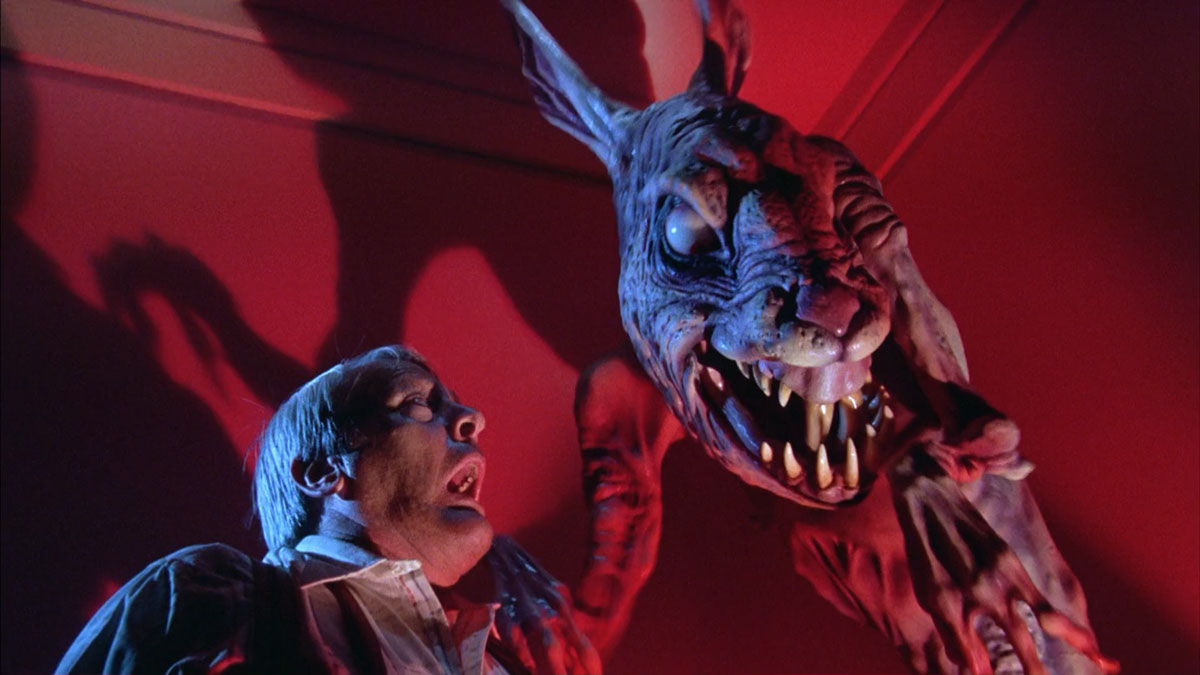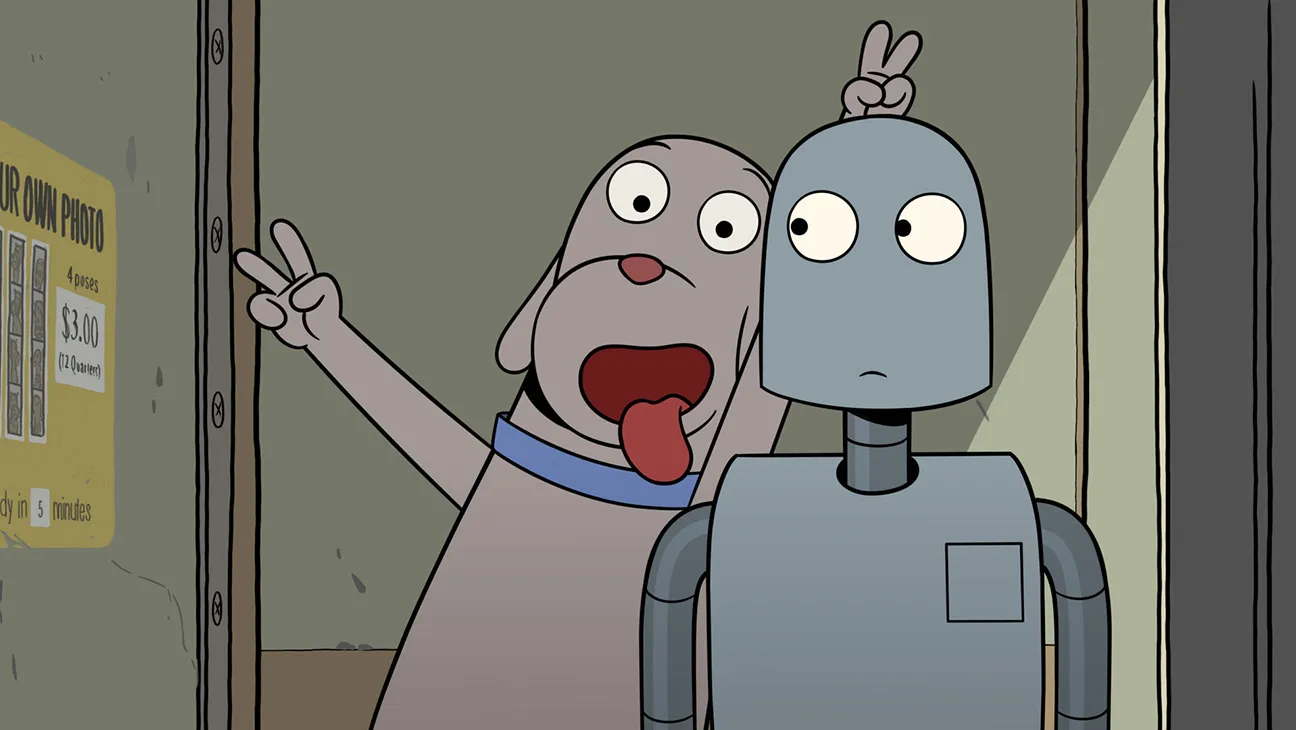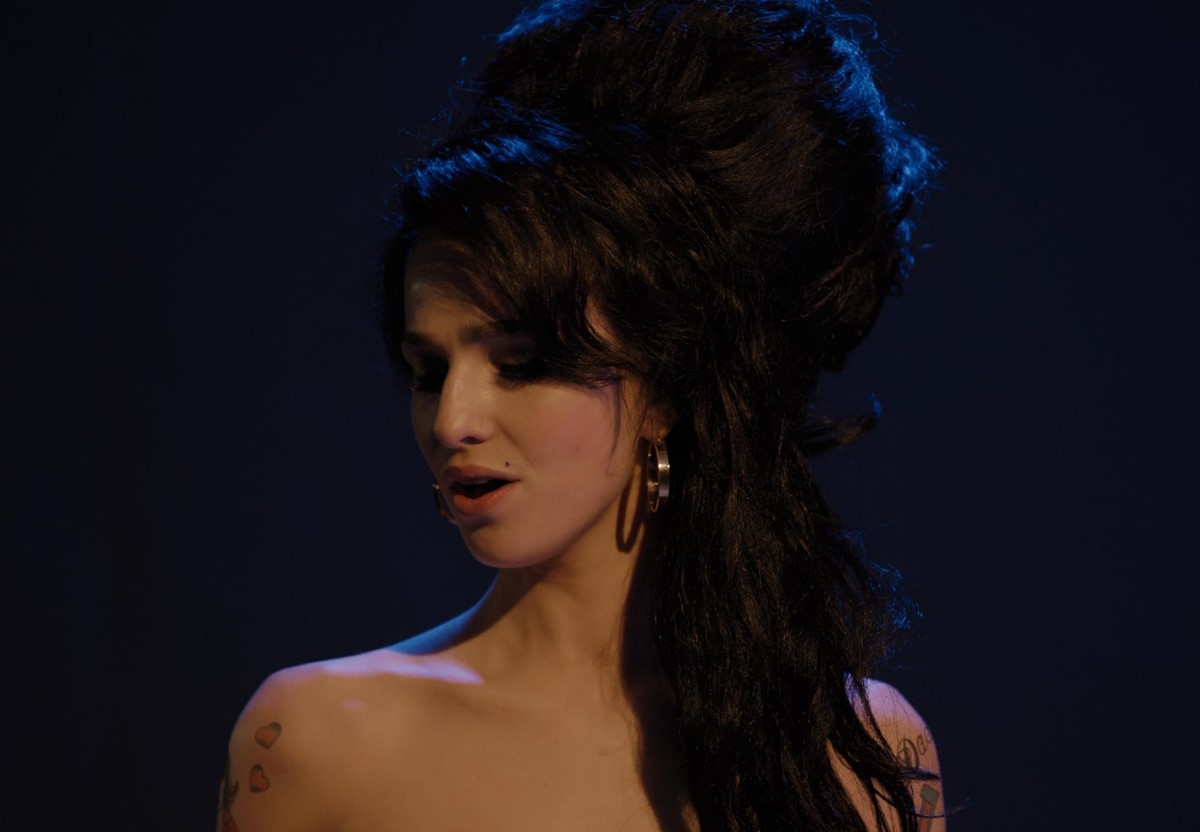by Pauline Kael
When stories like the ones that were told on the Rod Serling TV show “The Twilight Zone” grow up, they become Borges fables—metaphysical hoodwinks. I didn’t expect (or want) Twilight Zone—The Movie to be Borgesian, but I did rather hope that John Landis, Steven Spielberg, Joe Dante, and George Miller—the four young directors who are paying homage to the TV series—would tease us with more artful macabre games than the ones of the old shows. It’s a naïve (and dubious) sort of tribute that sets out to do essentially the same thing with the implicit expectation of doing it better; what they’ve given us is simply a remake. The original shows, which ran from late 1959 to 1964, and have been in rerun ever since, were ingenious partly because of how economically they got their effects. There were few characters—sometimes no more than two, or even one, and rarely more than eight or nine. They were ordinary people—little guys, anonymous Americans—and the meagrely furnished shows had a sort of cardboard realism. This was cottage-industry sci-fi fantasy. For the first two seasons, the half-hour shows were budgeted at sixty thousand dollars each; that meant one day for rehearsal and three days for shooting. (The budget sometimes got so tight that for a while the directors weren’t allowed to use film; they had to use videotape—which in its early years was a miserable medium—and stage the shows the way live television plays were staged.) By necessity, the mysterious was made homey, almost comforting. Sometimes it might seem as if Rod Serling’s message were that the U.S.A. was so democratic that demons visited even the common man. Serling was always trying to make a statement about the human condition; it generally turned into a lesson in how to be a good neighbor. The shows—there are a hundred and fifty-six of them—packaged an endearingly corny mixture of supernaturalism and civics. There are probably millions of people who as kids learned the cliches from “The Twilight Zone.”
The new movie takes off like a breeze, with Dan Aykroyd and Albert Brooks—hitchhiker and driver—in a car at night on a dark country road, passing the time by playing trivia games, quizzing each other about the theme music for old TV series, and inevitably getting to “The Twilight Zone.” Written and directed by John Landis, this prologue is a beauty, but the happy rush of fright we get from it has to sustain us for a long stretch, because the first two episodes are embarrassments. The first, which was suggested by some of the old shows (rather than adapted from them, like the three others), is a painfully blunt sermon on the evils of racism and prejudice. The central character, a loudmouthed bigot, is played by Vic Morrow, who, along with two Vietnamese-American children, was killed in a helicopter accident during the filming; that may be why we don’t get the turnaround that we expect—when this bigot, after experiencing the terrifying plight of being a Jew trapped by the Nazis in occupied Paris, and a black chased by a lynch mob in the South, and a Vietnamese gunned down by G.I.s in a paddy, would metamorphose into a decent person. I assume that the moviemakers considered the possibility of dropping this segment, but that its writer-director, Landis, who was co-producer (with Spielberg) of the whole film, probably felt that it would be a memorial to Vic Morrow—that he wouldn’t have wanted his last performance to be scrapped. It is, after all, a starring role in one-fourth of an A-budget movie. And there’s nothing the matter with his scowling bad-guy performance, except there’s no shading in it —that would probably have come with the twist.
The episode has no real ending, but that isn’t what makes it so awful. What does is that the production is overscaled for its dinky, dull idea. Probably the quality that makes the original shows tolerable is their bareness; their emptiness is eerily restful, and viewers extend good will to Rod Serling’s preaching because of the amateurish, tacky, school-play look. The black-and-white photography doesn’t suggest the sixties—it’s an indefinite past, a synthesis of thirties and forties and fifties, when everybody was Eisenhower-gray. Here, as soon as we see crowds on the screen and elaborate camera setups, Landis’s thin pretext of a script collapses. With big colored images on a movie screen, and even images of Vietnam, the characters, who talk like throwbacks to that gray age, don’t make any sense. This section is like an unconscious parody of the old shows; its straightness is a deadweight on the viewer’s head.
In some ways, the lump of ironclad whimsy directed by Spielberg, which follows, is a worse embarrassment. It’s about how through their willingness to engage in youthful play a group of people in a home for the aged become children again (which the moviemakers regard as a great break for them). And as if the whole idea (it’s adapted from the 1962 show “Kick the Can,” written by George Clayton Johnson) weren’t darling enough, a good-fairy black man, played by Scatman Crothers, has been added, so that he can bare his choppers and smile angelically for what certainly feels like eternity. (A friend commented, “I guess we’re going to have to accept Song of the South as another of Steven Spielberg’s formative experiences.”) There are a few pleasant jokes involving the old people’s voices, which they carry over into their new kiddiehood. (Selma Diamond’s whiny, nasal rasp is a perfect match for the little girl it comes out of.) But this is a coy and twinkling piece of work. Having become children, the people can go back to their aged bodies with “fresh young minds”—like the sugarpuss minds of the moviemakers who worked on this segment? With the gloppy rich music, and what might be (laughingly) described as the ensemble acting, the tone here is sentimental-comic, and horribly slick. It’s as if Steven Spielberg had sat down and thought out what he could do that would make his detractors happiest.
The third segment, directed by Joe Dante, from a script by Richard Matheson, is loosely based on the 1961 show “It’s a Good Life,” from a short story by Jerome Bixby. It’s a risky attempt at using a style derived from animated cartoons for an insidious, expressionist effect, and after the two latent parodies it’s a relief to see something that—unresolved as it is—is at least clearly and unmistakably a parody. There are so many startling good things in it—one of them is the alert, graceful Kathleen Quinlan as a strong-willed young schoolteacher—that I wish it were fully successful, but the half hour seems long. Matheson, who wrote a number of the original shows, hasn’t lived up to his own formulation that “the ideal ‘Twilight Zone’ started with a really smashing idea that hit you right in the first few seconds; then you played that out, and you had a little flip at the end. That was the structure.” There’s more than one smashing idea here; there’s also a misleading prelude, and then the ideas (which don’t quite complement each other) pop up, hit you, and recede. No one seems to have known how to get this segment started, and it dwindles away, as if no one knew how to finish it, either. (It badly needs a little flip.) The theme is how horrible life might be if a ten-year-old boy (Jeremy Licht) could run everything just as he liked, on the basis of what he has learned from TV, and this may be too fertile a subject for the half-hour form; there are also too many different kinds of parody (mostly of television and of acting, but also of American child-centered family life) buzzing around in the material.
This Looney Tunes segment is eccentric and unsettling; it has a couple of spooky images—one of the boy’s mute older sister, who has had her mouth wiped off her face (so she can’t talk back to him), and one of a cartoon rabbit who is skinned and fanged. He could give you the screaming meemies. And there are some tingles. For example, we catch a glimpse of the isolated house (where most of the action takes place) in a TV cartoon, and this house—Victorian, with a parking lot—has a long hallway that’s a cartoon version of the passageways in The Cabinet of Dr. Caligari. There may even be a tingle in the fact that Kevin McCarthy, who plays the boy’s guffawing Uncle Walt, has an obvious affinity for cartoon-style acting, and his big jaw and huge teeth look just right here. And a little bell rings when we meet the boy’s family, because we already know them and their double takes from the cheery, bland characters these actors have played in family-centered sitcoms; it’s a while before we recognize that they’re so frightened they’re hysterical. The notion of the boy’s controlling people and turning them into two-dimensional figures in a cartoon world is powerfully creepy; somebody has slipped acid into our lemonade. Joe Dante and his helpers (one of them is the animator Sally Cruikshank) have created an insane atmosphere, and for those people in the audience whose childhood included a TV set that was always going this half hour may reawaken all sorts of childhood feelings. Dramatically it doesn’t work, but the pieces are almost all there and you can put it together afterward; it’s better when you think it over than when you’re watching it.
Matheson lives up to his formula for an ideal “Twilight Zone” in the fourth episode, which is a reworking of his script for the 1963 “Nightmare at 20,000 Feet,” and, with the Australian George Miller (the director of The Road Warrior) in charge and John Lithgow as star, the result is a classic shocker of the short form—something that ranks with the Alberto Cavalcanti segment of Dead of Night, the one with Michael Redgrave as the ventriloquist. Miller can’t get any distance from his subject: almost all the action takes place in the confines of a plane during a storm, and most of it in the tight space where Lithgow, as Valentine, is seated squirming and wriggling, sick with fear. The whole episode is about this one passenger’s freaking out. (Redgrave’s ventriloquist was coming apart, too, and Matheson and Miller may be paying their respects to Dead of Night by including among the passengers a little girl with a ventriloquist’s dummy.) Working within strict spacial limits, and with Lithgow almost always on camera, Miller builds the kind of immediacy and intensity that Spielberg built at the high points of Jaws. Miller’s images rush at you; they’re fast and energizing. And it’s in no sense a putdown to say that the short format is perfect for him. The mechanical virtuosity he sustains here would be too overwhelming in a full-length movie—it would seem inhuman. Here, Lithgow makes everything credible. You’re never aware of his pumping himself up; hysteria seems to come naturally to him. He does something that’s tough for an actor to do: he shows fear without parodying it and yet makes it horrifyingly funny to us. And when you see an actor with this kind of finesse working inside such bizarre material, the finesse itself is outlandish and makes us laugh.
John Lithgow is six foot four, and he’s built large, and cuddly, like a Teddy bear. Onscreen (and on the stage, too), he has a special gift for far-out characters, such as the transsexual Roberta Muldoon in Garp. Lithgow domesticates flakes; he lets us observe which screws are loose and which are fixed firmly in place. Valentine, the respectable author of a book on computer microchips, is about as far out as a role can get. Valentine has been shaking too much to shave; he has soft stubble on his chin. Those who are subject to anxiety attacks may have a double anxiety attack when they recognize that an attack is starting. Valentine is soaked in cold sweat. He isn’t fat, but he’s fleshy, and when the sweat pours he’s like an animal in terror—a baby-faced ox. And he’s writhing with shame because he can’t control himself. He knows that the other passengers and the stewardesses (who had to help him back to his seat after he’d panicked in the john) think he’s distraught, and maybe they think he’s crazy. What else would account for the squalling sounds he has been making, or the way he has been twisting himself on the tiny seat, like a human pretzel? And now, looking out his window, he thinks he sees a form outside, skittering about on the wing of the plane. Peering through the wind and the heavy, sleeting rain, he can’t be sure if it’s an animal or a person. The other people on the plane look where he points and see nothing. Can it be just an illusion—a projection of his fear? Abject and humiliated as he is, sedated by the head stewardess and trying to act rational, he nevertheless has a compulsion to see what’s out there. He lifts his drawn window shade. The shadowy gremlin is attacking the plane, clawing at the wing and tearing out an engine.
Lithgow’s performance is like a seizure; the art is in the way he orchestrates it emotionally. With his white face all scrunched up, and anxiety burning out his brain, he takes us with him every step of the way, from simple fear to dementia to stupor, and every step is funny. Valentine never stops embarrassing himself. It’s a comic orgy of terror.
New Yorker, July 25, 1983
Republished in Pauline Kael, State of Art, 1985





